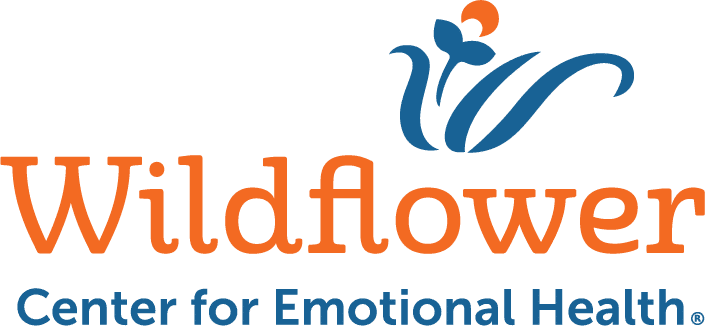Today, approximately 83% of mothers in the United States are attempting to breastfeed (Bresnahan et al., 2019). The World Health Organization (WHO) recommends that breastfeeding should occur within the first hour of life, should be done exclusively for 6 months, and should continue up to 2+ years of age (CDC, 2024). However, the rate of exclusive breastfeeding has dropped to 78.6% by the end of the first month. By the 6 month mark, exclusive breastfeeding drops further to 24.9% while only 55.8% of mothers breastfeed at all (CDC, 2022). So, what is the cause for this sharp decline? Many mothers are finding that breastfeeding, which is typically advertised as natural, easy and wonderful, actually comes with a lot of difficulties that they were not prepared for. For instance, breastfeeding difficulties are reported by around 70.3% of mothers and include pain, latch and supply issues, allergies or discomfort in the infant, excessive crying, fatigue, early cessation and mental health issues (Grattan et al., 2024).
The perinatal period is linked to an increased rate of mental health disorders. Perinatal mood and anxiety disorders (PMADs) affect an estimated 15-21% of perinatal women, with 1 in 7 affected by perinatal depression and 13-21% affected by perinatal anxiety (Hernandez et al., 2022). More mothers are particularly vulnerable to perinatal depression during the first 3 months of the postpartum period (Tucker & O’Malley, 2022). Postpartum depression (PPD) in particular affects 13-19% of mothers soon after giving birth. It “is characterized as a persistent low mood in new mothers, which is often accompanied by feelings of sadness, worthlessness, and/or hopelessness” (Pope & Mazmanian, 2016). PPD differs from the “baby blues” in that the latter is experienced by “4 in 5 mothers within the first few days following childbirth and usually remits within 10 days” while the former typically has an onset within the 4 weeks postpartum (Pope & Mazmanian, 2016). While acknowledging the relationship between breastfeeding and PMADs as a whole, much of the information in this article will focus on the relationship between breastfeeding and postpartum depression.
To Breastfeed or Not to Breastfeed
There are many reasons why mothers choose to breastfeed. According to WHO, breastfeeding has significant benefits for both mother and baby. Breastfeeding can result in better cognitive functioning and reduced infections in infants (Grattan et al., 2024). Through breastfeeding, immunoglobulins, or antibodies, are passed from the mother’s immune system to the infant and create a passive immunity in the baby to fight germs like bacteria and viruses (Atyeo & Alter, 2021). Breastfeeding can protect the baby from asthma, obesity, type 1 diabetes, severe lower respiratory disease, acute otitis media (ear infections), sudden infant death syndrome (SIDS), gastrointestinal infections (diarrhea/vomiting) and necrotizing enterocolitis (NEC) for preterm infants. For mothers who breastfeed, there is a lower risk of breast cancer, ovarian cancer, type 2 diabetes, and high blood pressure (CDC, 2024). These mothers also tend to have lower rates of obesity, hypertension, cardiovascular disease, and hyperlipidemia.
Studies have shown that breastfeeding leads to stronger bonding between mother and baby. Infants are less likely to be irritable and are more likely to be vocal and physical, which can improve the relationship and alleviate depressive symptoms in mothers. One study found that breastfeeding mothers sleep 2.6 hours longer than mothers who bottle-fed, which significantly reduces the rate of PPD. In fact, it has been found that mothers who “used formula at night, suffer nearly 3 times the amount of sleep loss compared to mothers who exclusively breastfeed.” (Tucker & O’Malley, 2022). Breastfeeding is also more economical and can enhance a mother’s self-efficacy and feeling of importance as they are taking on a role that might only be available to them in a parental partnership (Tucker & O’Malley, 2022).
There is a strong correlation between lactation and a reduction in stress levels. Basal norepinephrine levels (a hormone released in “fight or flight” to quickly increase heart rate, blood pressure and blood sugar) and the plasma adrenocorticotropic hormone (ACTH), which regulates cortisol (a hormone released when the body is under stress to regulate the stress response) are reduced by lactation (Tucker & O’Malley, 2022). Both ACTH and cortisol are crucial in controlling anxiety and depression. As breastfeeding has been shown to limit the secretion of stress response hormones, symptoms of postpartum depression are reduced (Tucker & O’Malley, 2022).
However, there are many reasons why mothers might either choose not to breastfeed or simply cannot. While breastfeeding has been lauded in recent decades, a duality has formed in what we expect from mothers, which can cause shame and stress around the idea of breastfeeding. For instance, some mothers feel embarrassed to breastfeed in public as it has been seen as lewd in a culture that oversexualizes women. But a baby’s eating schedule does not consider this, making breastfeeding more inconvenient than formula feeding. If a baby has specific feeding needs like allergy sensitivities or particular nutrients, there are various formula types that can cover these needs (Boeson Research, 2022). While breastfeeding mothers might feel a stronger sense of importance in their role as sole milk provider, they also might feel less supported by their partner as the entire responsibility of feeding rests on the mother. Additionally, during the first few months of breastfeeding, mothers might feel objectified, run down and not able to separate their identity from their role as primary feeder, which can make them more vulnerable to PMADs. There is also the issue of maternity leave not always being long enough for new mothers to adapt to and establish breastfeeding practices. So, some mothers choose to create a boundary by seeking balance with formula feeding, improving their chances of shared responsibility in a parental partnership.
The “Breast is Best” campaign has allowed for a surplus of standardized information for breastfeeding mothers. However, this standardized information does not consider the difficulties that can arise with breastfeeding. For instance, one study polled first-time mothers on factors that influenced their decision to breastfeed or not. 67% reported that they did not feel educated enough about breastfeeding and therefore opted out. The idea that breastfeeding is natural and therefore must be wonderful, “easy, free flowing and occurs by itself” completely discounts the frequent reports of mastitis, delayed lactogenesis, insufficient breast milk, latching issues, distracted nursing, dysphoric milk ejection reflex, feelings of being reduced to one function, and postpartum anxiety and mood disorders (Quinones, 2023). Another study found that 75% of mothers surveyed experienced early cessation due to having at least two breastfeeding issues while not having informative and individually curated support from health care providers. It has been reported that many healthcare providers instead might provide standardized answers to mothers’ questions or make referrals to a lactation consultant. However, many mothers have claimed needing “praise and encouragement, accurate information, observation of the breastfeeding behavior, diagnosis of the problem, and a solution” (Radzyminski & Callister, 2016).
Overall, “Breast is Best” has led to some harmful overarching messages that inadvertently have made new mothers more susceptible to PPD. This ultimately defeats this mission’s purpose, as poor mental health in mothers can lead to more difficulties in breastfeeding. One study found that one woman was taught by a lactation consultant that giving an infant baby formula was equated to giving them KFC, despite doctor’s orders. As a result, breastfeeding translated to being the only viable option and thus “trumped a mother’s right to respect, informed consent and personal choice” (Grattan et al., 2024). Breastfeeding became inherent to the identity of motherhood, and without it, a mother could be deemed a “failure”. These types of messages have led to an uptick in body shaming, self hatred and PPD. In the end, it was found that increased rates of PPD symptoms was not due to a decreased rate in exclusive breastfeeding but rather the increased pressure around exclusive breastfeeding (Grattan et al., 2024).
There are even differences in how mothers are affected if you have either chosen not to breastfeed or if you are unable to breastfeed. One study found that mothers who chose not to breastfeed, did not generally experience stigma on micro (personal) or meso (social network) levels. In comparison, mothers who were unable to breastfeed had greater self-stigma and a stronger belief that they were deemed “failures”. They also had higher perceived stigma in their social network. Both types of alternative feeding mothers experienced perceived macro (societal) level stigma. Women who were unable to breastfeed reported higher rates of hiding formula use and had a lower rate of connection with their baby (Bresnahan et al., 2019). Clearly, breastfeeding alone cannot explain the disparity in postpartum depression rates between mothers who breastfeed and mothers who do not.
Impact Is Bidirectional
The impact of mental health and breastfeeding is bidirectional. The state of the mother’s mental health greatly affects their ability to breastfeed, while breastfeeding has been shown to reduce symptoms of PPD in mothers. In fact, the presence of postpartum anxiety and depression has been found to correlate with early cessation of breastfeeding, which can occur around 26 weeks compared to 39 weeks for mothers without depression. In turn, early cessation can cause or increase symptoms of PPD. Additionally, if a mother experiences prenatal depression, they might have a late initiation of breastfeeding, while if a mother experiences postnatal depression, they might have a shorter duration of breastfeeding (Tucker & O’Malley, 2022).
During pregnancy, the placenta produces estrogen and progesterone, hormones that play a key role in fetal development. Immediately after birth, these hormone levels drop due to the loss of placenta. As a result, mothers typically experience “mood swings, anxiety, and feelings of depression” or the “baby blues” (Copperstate, 2023). During pregnancy, estrogen and progesterone block the action of prolactin and oxytocin, hormones responsible for milk production and its release respectively. So when estrogen and progesterone drop postpartum, milk secretion can begin. When mothers breastfeed, prolactin increases. Production of prolactin occurs at night and is associated with making mothers feel sleepy (World Health Organization, 2009). There is an association of increased prolactin levels with longer periods of deep sleep (Tucker & O’Malley, 2022). Prolactin production may stop when a mother does not breastfeed.
Oxytocin is another hormone that is produced with breastfeeding and can enhance bonding, induce calmness and reduce stress (World Health Organization, 2009). It is also important to note that mothers who are obese or have diabetes might have more breastfeeding issues due to increased progesterone, which is stored in adipose tissue (Tucker & O’Malley, 2022). Ultimately, the levels of these hormones, along with mental health, change in circadian rhythms, exposure to light, infant feeding times, social, cultural, socioeconomic and environmental factors, urinary incontinence, physical pains, and predisposition to poor sleep all can contribute to poor postpartum sleep quality, which in turn can cause difficulties in breastfeeding and exacerbate PPD symptoms (Gallaher et al., 2018).
Solutions for Healthcare Providers
The decision to breastfeed or not can be riddled with confusion, stress and insecurity. Barriers to breastfeeding vary by culture and socioeconomic status. However, generally, barriers include a lack of breastfeeding and alternative feeding knowledge and a mother’s inability to meet societal standards of what is expected of them in regards to breastfeeding and motherhood. Unfortunately, this bi-directional relationship between breastfeeding and mental health can create a vicious loop, which ultimately does not do the mother or infant any good. So what steps can healthcare providers take to minimize harm in regards to breastfeeding and mental health?
Reform how healthcare professionals talk about breastfeeding
By having more upfront and honest conversations about breastfeeding difficulties both prior and after a mother giving birth, the mother might be able to alter their expectations and plan for multiple scenarios. This can help reduce feelings of guilt and shame around their identity as a mother.
Provide balanced scientific information on all feeding practices
As feeding can look like exclusive breastfeeding, formula only or hybrid, it is essential for health care providers to provide evidenced based information around a mother’s feeding options. This will allow a mother to make an informed decision about her feeding choice with more dignity and preparation.
Respect and validate all informed feeding choices
Creating a non-judgemental environment, will open up space for mothers in all situations and can reduce stigma and rates of mental health issues. Harmful thoughts of being a “failure” or being a “bad mom” along with feelings of isolation and objectification might be minimized if we create a culture of equal support while having evidenced based information.
Individualize breastfeeding care, do not standardize it
This one is crucial. Streamlining healthcare around breastfeeding through a “breast is best” mentality can make a mother feel unheard, alone, and like a failure if their experience doesn’t follow a standardized path. Acknowledging the difficulties in breastfeeding and meeting a patient where they are at without judgment could be essential in reducing mental health issues, as it can normalize rather than pathologize these difficulties. As a result, this can improve health conditions for both mother and baby.
Tips for Mothers
There are also many steps that mothers can take to manage negative mental health symptoms and foster a supportive and adaptive environment:
1. Seek mental health therapy for support. Therapy can help combat negative thought patterns that might stem from stigma around motherhood and breastfeeding.
2. Join a support group for mothers either struggling with breastfeeding or who have similar mental health issues like PMADs. This is a great way to reduce feelings of isolation, depression, anxiety, guilt or shame.
3. Practice mindfulness skills that can lower your heart rate and create a sense of calm. Some ideas include deep breathing exercises, being present in nature, or stopping to identify and describe colors/objects in your space in an effort to become more grounded.
4. Create intentional moments of self-care
5. Educate yourself about the facts of different forms of feeding with evidenced based literature
6. Read books that can validate your individual experience such as “Good Moms Have Scary Thoughts” by Karen Kleiman
7. Let your support system know how best to validate, respect and support you
References
Atyeo, C., & Alter, G. (2021). The multifaceted roles of breast milk antibodies. Cell, 184(6), 1486–1499. https://doi.org/10.1016/j.cell.2021.02.031
Boeson Research. (2022, February 9). The benefits of formula feeding – Boeson research. https://boesonresearch.com/the-benefits-of-formula-feeding/
Bresnahan, M., Zhuang, J., Goldbort, J., Bogdan-Lovis, E., Park, S., & Hitt, R. (2019). Made to feel like less of a woman: the experience of stigma for mothers who do not breastfeed. Breastfeeding Medicine, 15(1), 35–40. https://doi.org/10.1089/bfm.2019.0171
CDC. (2022). Breastfeeding Report card. https://www.cdc.gov/breastfeeding/pdf/2022-Breastfeeding-Report-Card-H.pdf
CDC. (2024, November 6). Recommendations and benefits. Centers for Disease Control and Prevention. https://www.cdc.gov/nutrition/infantandtoddlernutrition/breastfeeding/recommendations-benefits.html#:~:text=The%20American%20Academy%20of%20Pediatrics,years%20of%20age%20or%20longer
Copperstate. (2023, August 21). Postpartum hormones explained. Copperstate OB/GYN. https://www.copperstateobgyn.com/postpartum-hormones-explained/
Gallaher, K. G. H., Slyepchenko, A., Frey, B. N., Urstad, K., & Dørheim, S. K. (2018). The role of circadian rhythms in postpartum sleep and mood. Sleep Medicine Clinics, 13(3), 359–374. https://doi.org/10.1016/j.jsmc.2018.04.006
Grattan, R. E., London, S. M., & Bueno, G. E. (2024). Perceived pressure to breastfeed negatively impacts postpartum mental health outcomes over time. Frontiers in Public Health, 12. https://doi.org/10.3389/fpubh.2024.1357965
Hernandez, N. D., Francis, S., Allen, M., Bellamy, E., Sims, O. T., Oh, H., Guillaume, D., Parker, A., & Chandler, R. (2022). Prevalence and predictors of symptoms of Perinatal Mood and anxiety Disorders among a sample of Urban Black Women in the South. Maternal and Child Health Journal, 26(4), 770–777. https://doi.org/10.1007/s10995-022-03425-2
Pope, C. J., & Mazmanian, D. (2016). Breastfeeding and Postpartum Depression: an overview and methodological recommendations for future research. Depression Research and Treatment, 2016, 1–9. https://doi.org/10.1155/2016/4765310
Quinones, C. (2023). “Breast is best”. . . until they say so. Frontiers in Sociology, 8. https://doi.org/10.3389/fsoc.2023.1022614
Radzyminski, S., & Callister, L. C. (2016). Mother’s beliefs, attitudes, and decision making related to infant feeding choices. The Journal of Perinatal Education, 25(1), 18–28. https://doi.org/10.1891/1058-1243.25.1.18
Tucker, Z., & O’Malley, C. (2022). Mental Health Benefits of Breastfeeding: A Literature review. Cureus. https://doi.org/10.7759/cureus.29199
World Health Organization. (2009). The physiological basis of breastfeeding. Infant and Young Child Feeding – NCBI Bookshelf. https://www.ncbi.nlm.nih.gov/books/NBK148970/


